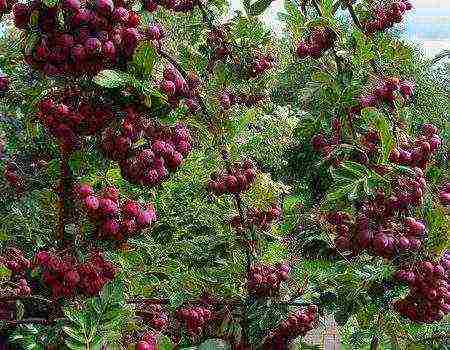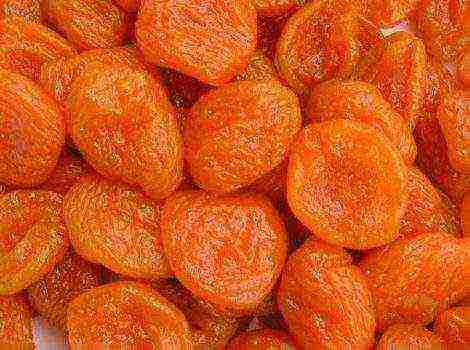Content
Detailed description of pear variety Lyubimitsa Klappa
Pear variety Lyubimitsa Klappa has a special taste and aroma. Gardeners appreciate this type of pear for its simplicity in care and cultivation.
The variety was bred in the 19th century by American breeders.
Description of pear variety Lyubimitsa Klappa
The variety has become widespread in Russia. This beauty grows in the Krasnodar and Stavropol Territories, the Lower Volga Region and Kalmykia, the Rostov and Astrakhan Regions.
The height of a pear tree of the Lyubimitsa Klappa variety does not exceed four meters, the plant belongs to medium-sized plants.
The young tree is actively growing. In the second half of life, the crown develops, during this period it takes on a wide rounded shape.
The pear tree Klapp's favorite is capable of bearing fruit in any type of soil and withstands low temperatures and drought. The average lifespan of a plant is 55 years., the maximum lifespan is 80 years.
Fruit trees of this species are endowed with gorgeous foliage, this fact is of decisive importance when choosing a variety. Luscious, shiny foliage that can beautify any garden area.
The plant acquires special attractiveness in spring, during its flowering period.
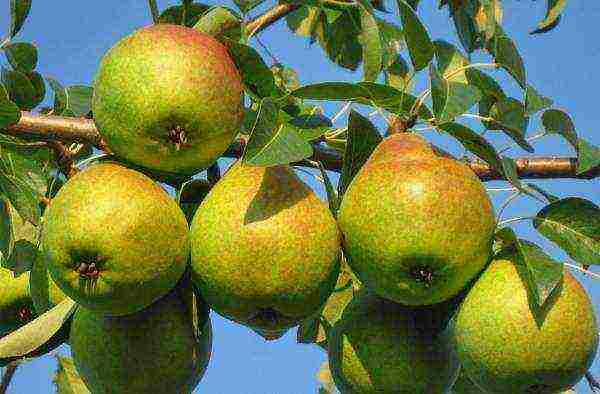
Fruits of the variety Lyubimitsa Klappa of medium and large form, weighing from 110 to 250 grams, with large pears usually growing on young trees. The older the tree, the smaller the fruit.
The egg-shaped fruit has a somewhat elongated shape. The skin is soft and smooth with small tubercles. Ripe pear becomes yellowish, on the sunny side, a slight blush is allowed. The stem of the pear is short, thickened at the base.
Pear fruits are very juicy... They have a light aroma and sweet and sour taste. Due to its wonderful taste, the pear is usually eaten raw, at the same time, it is harvested for the winter: canned and dried.
For the manufacture of dried fruits, fruits are taken at the initial stage of development. Ripe plucked fruits are stored for 10 days up to two weeks.
Advantages and disadvantages
The variety Lyubimitsa Klappa has a number of advantages, thanks to which gardeners prefer this particular type of pear. The advantages of the variety:
- unpretentiousness to the type of soil;
- the ability to bear fruit for several decades;
- frost-resistant;
- juicy fruits with high technical characteristics.
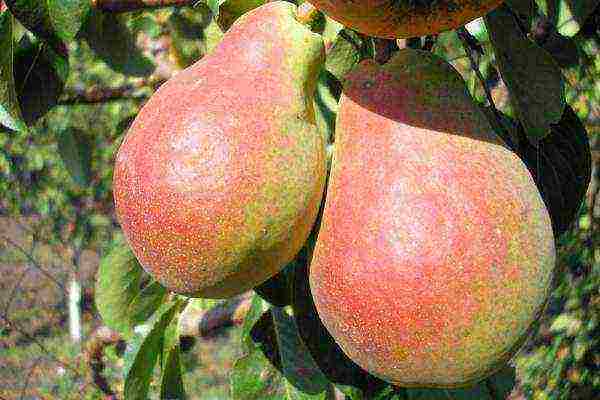
Along with the pluses, the variety has some disadvantages, among which the following factors should be noted:
- pear trees of this variety are prone to scab;
- ripe fruits are not stored for long;
- the fruits are not firmly attached, therefore fruit shedding sometimes occurs.
Landing
As already mentioned, the plant is unpretentious and can grow in any soil. but light moist soil is preferable... The soil should be good for air and moisture.
therefore they should grow in sunny areas, it is important that the air is not excessively humid.
Seedlings for planting are chosen strong and healthy. The trunk and branches of the tree should be elastic, and the root system should be developed: long, branched. Dead roots are cut to a living place before planting.
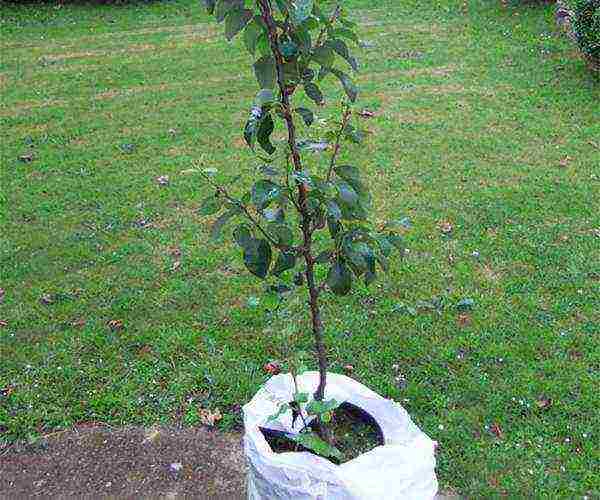
Trees can be planted both in spring and autumn, while, for spring planting, the soil is prepared in advance - in the fall... Spring disembarkation begins at the end of April and can continue until early May.
The soil must be pretreated in an appropriate way:
- The upper fertile layer is removed from the pit.
- The soil taken out of the pit must be mixed with organic fertilizers; for this case, manure, peat, compost are suitable. Mineral fertilizers (potassium-phosphorus) and wood ash are also added there.
- The resulting mixture is poured back into the pit to the very edge.
The seedling is deepened into the hole so that its root collar rises above the ground by 3 cm.The procedure for planting seedlings will be as follows:
- At the bottom of the pit, soil is placed in the form of a small mound.
- The seedling is lowered into the pit.
- The roots are carefully spread over the mound.
- Pour out the remaining soil.
- Tamp and slap.
- Form a circular ridge of earth around the trunk.
- Pour with water, you need two buckets.
- To mulch the earth.
- Tie the seedling to the peg.
Pear seedlings are very sensitive, they may die during the transplanting process, therefore this the procedure must be carried out with great care.
Plant care
In order for a pear to bear fruit well, it will need appropriate care. The plant needs to be fed regularly, water, carry out preventive procedures to combat diseases and pests.
Top dressing
From the very first days after planting, young trees will need to be looked after. As soon as the tree gets stronger and rooted, the first feeding is done.
In mature trees, the root system lies deeper, therefore fertilization is applied in a different way. For this, wells are made at some distance from the plant, fertilizer is poured into them.
In the spring, the pear requires nitrogenous fertilizers.... If the weather is dry and warm, you can spray the crown with fertilizers; on rainy days, fertilizer is applied to the wells.
This type of fertilizer will be necessary for the plant until mid-summer, then you need potassium and phosphorus.
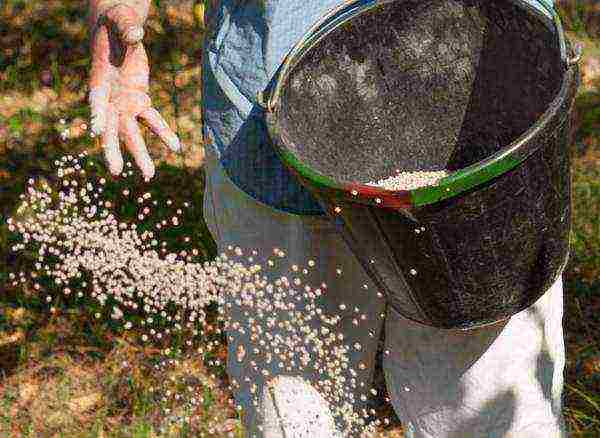
Crown formation
To protect the tree from frost breakers, it is necessary to form a crown... The main actions should be aimed at somewhat limiting the growth of the tree - it should not grow tall.
To this end, three to four years after planting, you will need to remove the central conductor at a level above the third tier of branches.
Subsequently, you will need to cut off the branches vertically coming out of the center. Thus, the height of the tree will be limited to 2 meters.
Watering
Pear Favorite Clappa Drought Resistantand yet it does require regular watering. One tree will need up to ten liters of water. Watering is done every three weeks.
A fruiting plant will need to be watered three times during the season. One tree takes up to 50 liters of water. This will depend on the number of fruits. Watering is carried out:
- during the flowering period;
- while pouring fruits;
- during the period of fruit ripening.
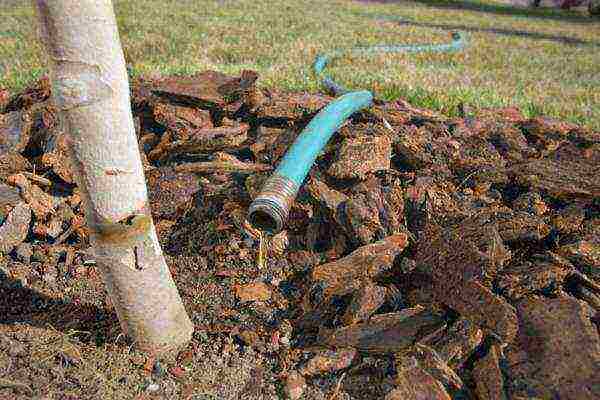
Pest control
Pear tree Clapp's favorite prone to scab... Therefore, gardeners will have to take preventive measures.
To prevent the appearance of scab, in the spring, immediately after the snow melts, and also two or three times in the summer, it will take process trees with Bordeaux mixture.
The interval between procedures should be at least four weeks.
Besides, the pear is also exposed to other hazards:
- fruit rot;
- sooty fungus (black bloom on the leaves);
- rust (spots on the leaves that resemble rust);
- mealy bloom.
Fungal disease - rust, is a common ailment among this type of pear. As a prophylaxis and treatment, the plant is treated with Bordeaux liquid.
If the disease has already begun, then the affected leaves must be collected and burned in an area remote from the garden.
In order to reduce the risk of developing this disease, it is important remove all juniper from the garden... This disease often develops on it, it can go to fruit trees.
Fruit rot and powdery mildew processed with chorus.

Harvest
Pears begin to bear fruit in the seventh year after planting. and give a stable harvest for 60-80 years. Up to 300 kilograms can be harvested from one tree per season.
In order not to damage the fruit during storage, the stalk must be preserved... Place the pears in a clean container. You need to store the crop in a ventilated dry place.
It is worth recalling that the shelf life of pears of this type is short. The pear belongs to the summer varieties. Damaged fruits cannot be stored.
Gardeners reviews
Many gardeners prefer the Favorite Klapp pear because it is an unpretentious plant... Gardeners' reviews about pear fruits are positive, pears are juicy, visually attractive and have a wonderful taste.
Though fresh fruits are not stored for a long time, pears make perfect compotes and jam.
According to gardeners' reviews, the Lyubimitsa Klappa pear is included in the list of the best varieties of pears growing in Russia.
Pear Klapp's favorite is prized for its attractive appearance and excellent taste. The rich taste and delicate aroma make it a favorite of both adults and children.
Pear trees of this variety have a number of advantages, they are frost-hardy and are not afraid of drought, thanks to such qualities, the variety has gained popularity among gardeners all over the world.

